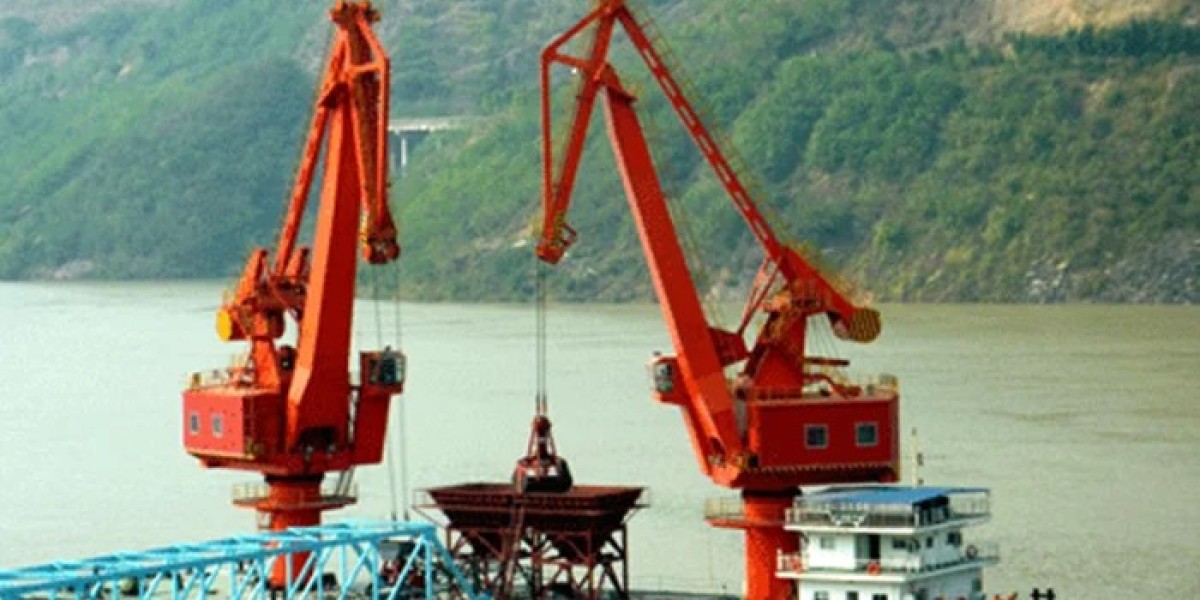Operating afloating crane, such as the ones manufactured byDezhong Equipment, requires a high level of skill, precision, and attention to safety. These specialized machines are designed to perform loading and unloading operations between ships and shore, handling a wide range of goods including bulk cargo, miscellaneous items, and containers. With efficiency ranging from 100t/h to 900t/h,floating cranes play a crucial role in maritime logistics. However, the operation of these cranes comes with inherent risks, making it essential to adhere to best practices to maximize afety.

1. Rigorous Training and Certification
Operating a floating crane demands specialized skills and knowledge. It is imperative for all personnel involved in the operation, including crane operators, riggers, and signal persons, to undergo rigorous training and obtain the necessary certifications. Training should encompass not only the technical aspects of operating the crane but also safety protocols, emergency procedures, and risk assessment. Dezhong Equipment, a leading manufacturer of floating cranes, provides comprehensive training programs to ensure that operators are well-equipped to handle the complexities of these machines.
2. Adherence to Safety Standards
Strict adherence to safety standards is non-negotiable when operating a floating crane. This includes compliance with regulations set forth by maritime authorities, as well as adherence to industry best practices. Regular inspections and maintenance of the floating crane, including its lifting machinery and specialized hull or barge, are essential to ensure that all components are in optimal working condition. Dezhong Equipment's floating cranes are designed and manufactured in accordance with the highest safety standards, providing operators with a reliable and secure working environment.
3. Risk Assessment and Mitigation
Prior to commencing any lifting operation, a thorough risk assessment must be conducted. This involves identifying potential hazards, evaluating the surrounding environment, and implementing measures to mitigate risks. Factors such as weather conditions, tidal variations, and the weight and dimensions of the cargo being lifted must be carefully considered. By conducting a comprehensive risk assessment, operators can proactively address potential safety concerns and ensure that the lifting operation is carried out with the utmost caution.
4. Clear Communication and Signaling
Effective communication is paramount during the operation of a floating crane. Clear and unambiguous signaling between the crane operator, riggers, and signal persons is essential to prevent accidents and ensure the safe and efficient movement of cargo. Standardized hand signals and radio communication protocols should be established and adhered to at all times. Dezhong Equipment's floating cranes are equipped with advanced communication systems to facilitate seamless coordination between the various personnel involved in the lifting operation.
5. Load Capacity Management
Exceeding the load capacity of a floating crane can have catastrophic consequences. It is imperative for operators to have a comprehensive understanding of the crane's load capacity and to strictly adhere to these limitations. Overloading a crane not only compromises safety but can also lead to structural damage and mechanical failure. Dezhong Equipment's floating cranes are engineered to precise specifications, with a clear emphasis on load capacity management to ensure safe and efficient operations.
6. Adapting to Environmental Factors
The operation of a floating crane is inherently influenced by environmental factors such as wind, currents, and wave action. Operators must be adept at adapting to these variables and making real-time adjustments to ensure the stability and safety of the lifting operation. Dezhong Equipment's floating cranes are designed with a low center of gravity, providing enhanced stability and maneuverability in varying environmental conditions.
In conclusion, the operation of a floating crane demands a steadfast commitment to safety, precision, and adherence to best practices. By prioritizing rigorous training, adherence to safety standards, thorough risk assessment, clear communication, load capacity management, adaptation to environmental factors, and emergency preparedness, operators can maximize safety and ensure the efficient and secure operation of these specialized machines. Dezhong Equipment's floating cranes, with their emphasis on safety, stability, and efficiency, are at the forefront of maritime logistics, providing operators with the tools they need to navigate the complexities of loading and unloading operations with confidence and security.
https://www.dh-equipment.com/maximizing-safety-best-practices-for-operating-a-floating-crane.html







